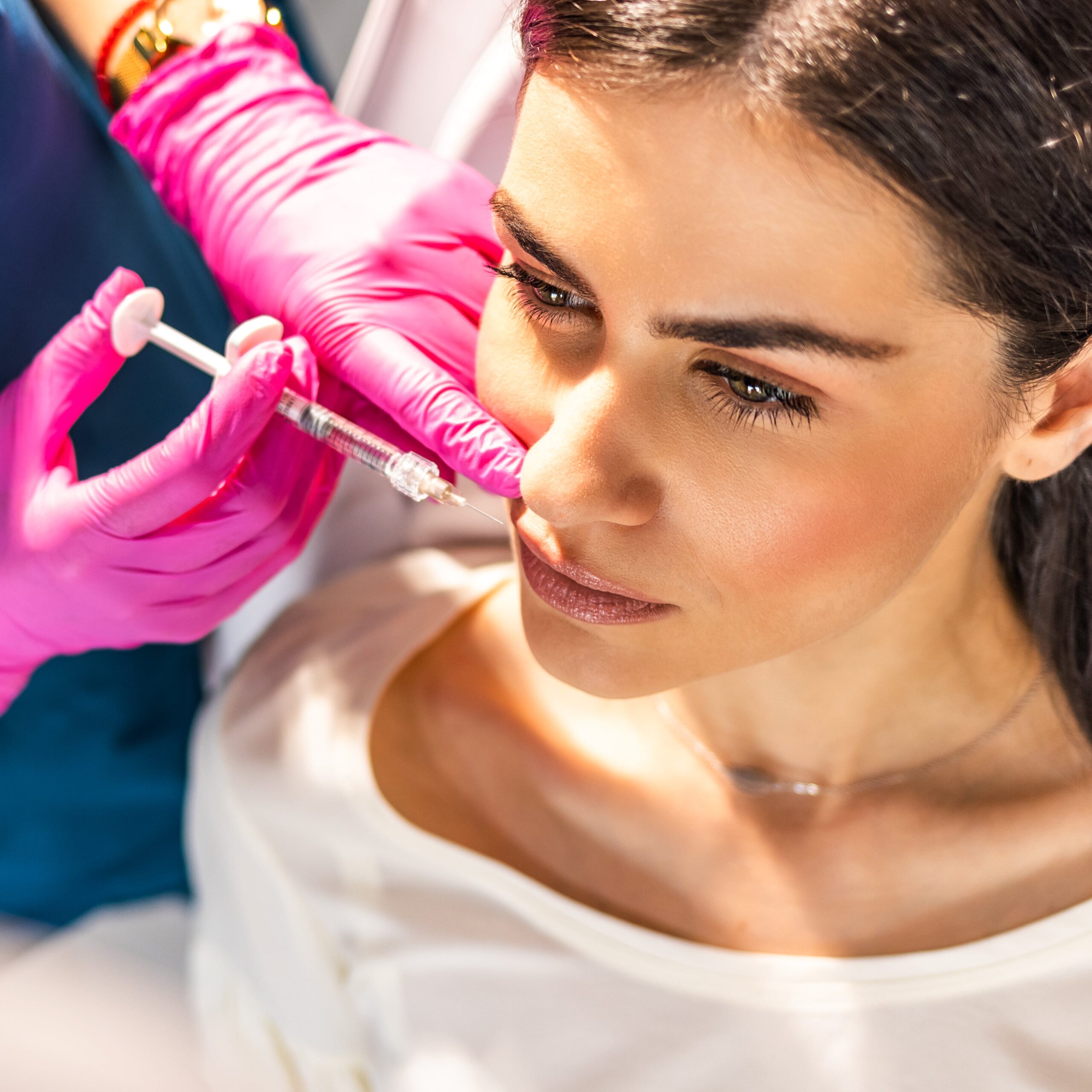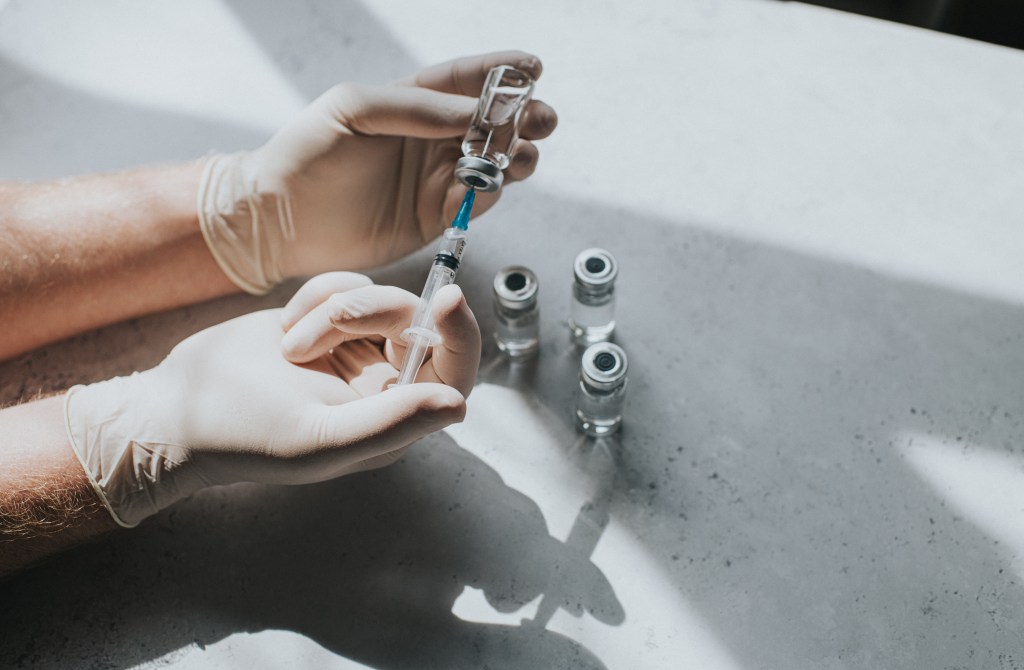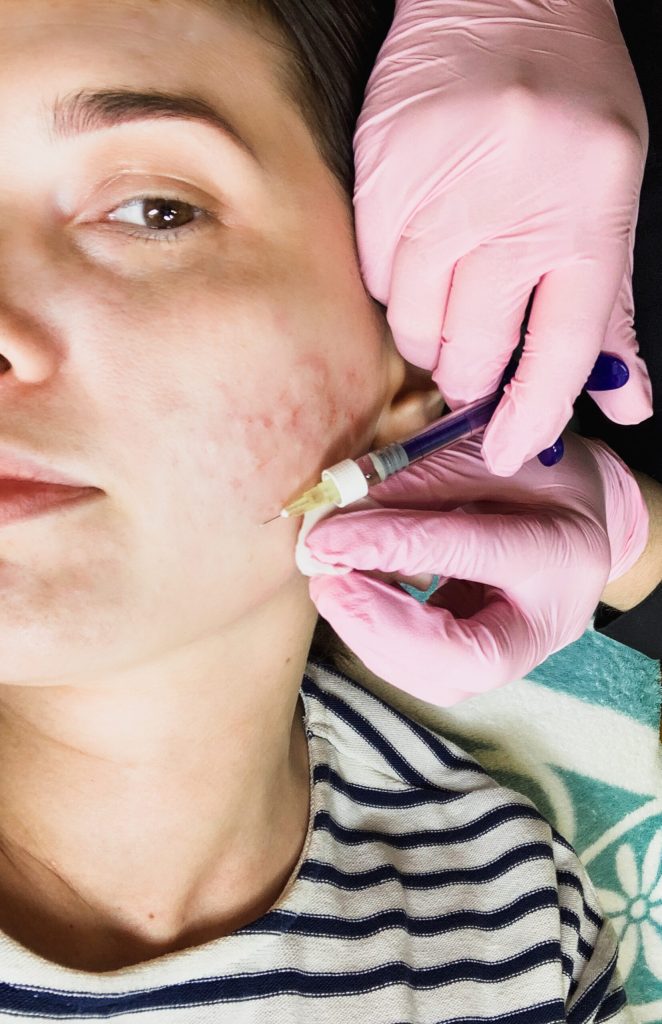
- POPSUGAR Australia
- Beauty
- All Your Questions About Cheek Filler, Answered
All Your Questions About Cheek Filler, Answered

As far as cosmetic treatments go, dermal fillers can work wonders at reviving lost volume and enhancing different areas of the face. However, fillers also have the ability to augment some other secondary things along the way, like smile lines around the mouth (a wrinkle that gets deeper as you get older). One thing that can help with that? Cheek fillers.
While the primary purpose of cheek fillers is to build up lost volume in the face, dermatologists often turn to them to help lift the nasolabial fold and smooth those laugh lines as well.
To help us understand everything you need to know about getting cheek filler, we tapped Nancy Samolitis, MD, FAAD, a board-certified dermatologist and owner of Facile Dermatology + Boutique for more. Keep reading as she answers all your biggest questions about the procedure.
What Are Cheek Fillers?
There are a few different types of dermal fillers that can be used on the cheek area. The most popular are made with hyaluronic acid, which is a naturally occurring substance in your body and can hold up to 1,000 times its own weight in water.
“We know that hyaluronic acid works well with our tissues and most people don’t react badly to it,” Dr. Samolitis says. She prefers to fill the cheeks with Restylane Contour, since it tends not to make people swell very much, it feels really natural, and it often lasts longer than other fillers in the Restylane or Juvéderm families. A perk of hyaluronic acid fillers is that if in the unlikely case you really don’t like the results, they can be dissolved with an enzyme called hyaluronidase.
The other filler that is sometimes chosen is Sculptra, which is made from polylactic acid and works by stimulating your skin’s natural collagen production – this means it works gradually, so it takes a lot more time to see results.
What Skin Concerns Can Cheek Fillers Address?
“Typically what we’re trying to achieve in the cheek is restoration of volume that has dissipated due to age,” Dr. Samolitis says. Cheek fillers can also be used to create a more contoured effect on the cheekbones, and lift nasolabial folds and jowls.
Placement is key when it comes to the results you’ll see. “I always look at people’s natural anatomy [to determine where to place filler],” Dr. Samolitis says. “The area we’re talking about for cheek fillers is actually pretty large.” She explains that there are two main regions of the face where cheek filler can live: the mid-cheek (i.e. the more front and center apples of the cheeks) and the lateral cheeks (i.e. the cheekbones and upward almost to the temples).
Injecting filler into the mid-cheek will replace a lot of that lost volume from aging, and can even help brighten up undereye circles due to hollowness. It will also cause more light to reflect off the face. However, Dr. Samolitis says that “more is not better here, because then you can start to look puffy and overfilled.”
For the lateral cheek, there are two spots that Dr. Samolitis likes to inject: directly on top of the cheekbone and right under it. “A lot of people feel like their skin is sagging, but they have a big cheekbone,” she says. “So if you put filler on that cheekbone, it’s going to make the rest of their face look skinnier because now you’ve accentuated that contrast between the hollowness of their lower face and the plumpness along the cheek.” Alternatively, injecting filler just below the cheekbone can help lift sagging jowls.
No matter your goal, it’s important to stay realistic about your expectations around what cheek fillers can and cannot achieve. Cheek fillers aren’t meant to fix something major like advanced sagging jowls or very deep wrinkles, so it’s important to talk to your doctor about what is possible.
How Much Do Cheek Fillers Cost?
Cosmetic treatments in general vary in price depending on where you live, with bigger cities at the highest price point. Otherwise, fillers are billed by how many syringes you use. Depending on the type of filler you’re getting, one syringe can run anywhere from $700 to $1,200. Your doctor will determine how many syringes you need according to the results you’re looking for – for example, if you want a subtle effect, they might only use one syringe. But if you’re trying to replace a significant amount of volume, you’ll likely need several.
Who Is and Isn’t a Good Candidate For Cheek Fillers?
Dr. Samolitis says that generally everyone is a good candidate for fillers. The only people who may want to steer clear are those who are allergic to lidocaine, since most hyaluronic acid fillers contain the numbing agent. There are a few types of fillers that don’t have lidocaine (like Sculptra), so Dr. Samolitis says to talk to your doctor about other options. She also says that people who have active autoimmune diseases that make them prone to inflammation should talk to their doctor before getting fillers since they might have more intense swelling.
How Long Do Cheek Fillers Last?
How long fillers last really depends on the placement, and how much natural movement the area gets. Lip fillers, for example, will dissolve more quickly than low-movement spots like cheeks or under the eyes simply because you move your mouth a lot every day. For cheek fillers specifically, Dr. Samolitis says that since these are really just sitting on top of the bone, people can expect them to last about a year (although she’s seen cheek fillers last for up to two years).
How Are Cheek Fillers Administered?
Like most fillers, those on the cheeks can be injected using a traditional needle or a cannula, a hollow tube. There hasn’t been any data to support that one method is safer than the other, Dr. Samolitis explained, so how the fillers are administered really comes down to personal preference. “I think I get better results with a needle than with a cannula for cheeks,” she said.
Some doctors apply a numbing cream, but that area of the face isn’t too sensitive. Dr. Samolitis explained that she usually asks people to give it a try without it – plus, the filler itself is mixed with lidocaine to help alleviate any pain.
Is There Anything You Should Avoid Before Your Appointment?
Dr. Samolitis noted that often people think they should stay away from things like alcohol and blood-thinning medications like aspirin the day before getting fillers to avoid bruising, but it’s actually more like two weeks for it make a difference. Of course, that’s not always realistic, so just do your best. Otherwise, you can live your life normally and show up to your appointment with a clean face.
What Are the Risks or Side Effects to Cheek Filler?
The most common and totally normal side effects are swelling and light bruising. As with any cosmetic procedure there are also a few (very rare) risks to keep in mind. For fillers, vascular occlusion (where the filler goes into an artery) or blindness are the most serious. This is why you shouldn’t skimp when it comes to choosing your doctor (more on that later).
Dr. Samolitis also noted that sometimes vaccines or viral infections can cause fillers to react and get more swollen, but it’s an unusual side effect and typically resolves on its own.
What Is the Downtime Like?
Prepare for a low-grade soreness right after getting your cheek fillers and into the next day. It’s possible that there can be some swelling for a day or two and bruising, which could last a week, but it varies person to person. Dr. Samolitis advises using ice packs to reduce swelling and sleeping propped up for a day or two.
Is There Anything You Should Avoid After Getting Cheek Fillers?
Dr. Samolitis says that by the time you’re walking out of your appointment, anything that’s bleeding that would result in a bruise has already stopped. “You’re not going to agitate anything or cause any new bleeding,” she said. However, you should avoid strenuous exercise for at least 24 hours or however long it takes for you to feel like you’re not swollen. Drinking alcohol or taking ibuprofen after your appointment is fine (in moderation, of course), and you should wait around two weeks before getting a facial massage or having anything tight like goggles around your face.
How to Choose the Right Doctor
Real talk: injectables can essentially be administered by anyone with any type of medical license, and only take completing a weekend course to start seeing patients. So when it comes to injecting something into your face, skip the Groupon or med spa.
It’s important to do your research and see a board-certified dermatologist or a nurse practitioner who works alongside a board-certified derm. Choose someone who is practiced in the art of injectables and has the creds to back it up – this is not the time to cut corners. Dr. Samolitis also stressed how crucial it is to not be afraid to ask questions, and that your doctor takes the time to answer every single one. Trust is key.



